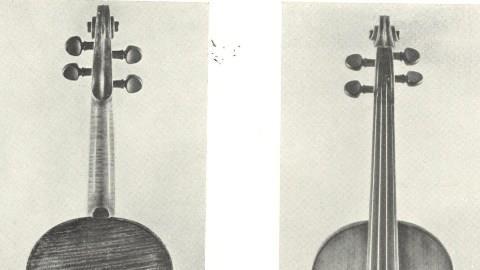This illustration of a violin by G.B. Rogeri was published in The Strad, May 1931. The following text is extracted from the article accompanying the photographs:
G.B Rogeri was born in Bologna about 1650, and records show that he came to Cremona to learn fiddle-making from Niccolo Amati. The influence of his master is evident in the development of his work, and it would also appear that Rogeri showed a partiality for the Amatise productions of Stradivari at that period. In the year 1670 Rogeri left Cremona and settled in Brescia, from which city his violins are dated.
His workmanship is neat and excellent in every detail, the purfling accurate, f holes reminiscent of Amati but with a rather more pronounced outward sweep. The varnish is rich and soft in texture, being of a golden-red in some violins and brown-red in others.
The usual measurements are 13 15/16th inches body length, 6 ¼ upper bouts and 7 13/16th lower. They are easy to play in upper positions on account of the well-rounded shoulders. For this reason they make ideal instruments for lady violinists, or any player whose hands are small.
Our photo shows a typical specimen with a whole back of beautiful figure. The table is of medium grain and the wood is chosen with the greatest care. The varnish is very transparent and of excellent quality, while the instrument as a whole is in fine preservation. Tone is big, sympathetic and of good carrying power.








































No comments yet